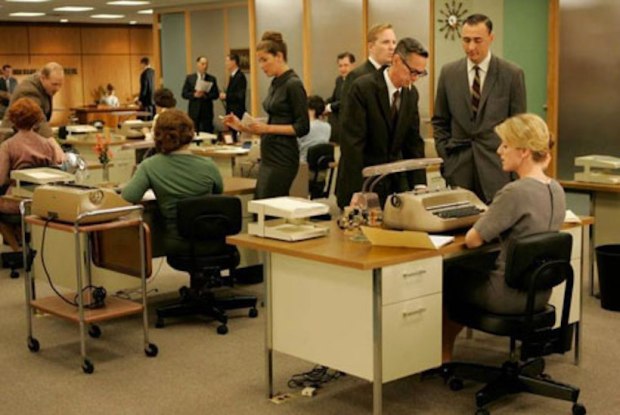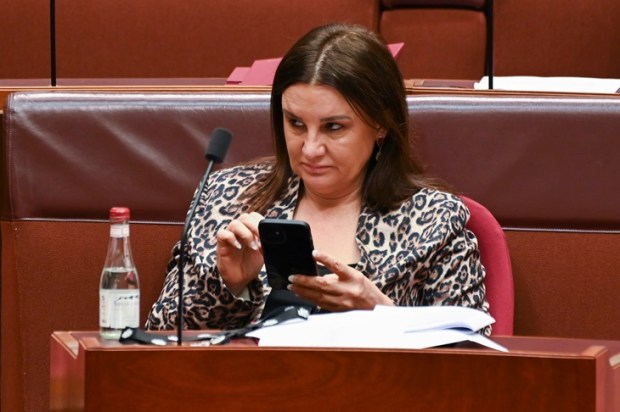In recently calling gig work a ‘cancer’, Workplace Relations Minister Tony Burke has made it pretty clear what’s in store for self-employed people. Cancers have to be attacked aggressively and cut out.
To attack gig is to attack the self-employed.
Gig platforms are a process by which self-employed people have the opportunity to organise their work. But actual gig numbers are small, with only 0.19 per cent of workers earning their full-time income through gig. This cancerous obsession with gig by Labor makes no sense. It’s nonsense.
The reality is that under ‘reforms’ flagged by the Albanese government the future for self-employed people is shaping up as pretty grim. Those reforms involve allowing self-employed people to retain the tag ‘self-employed’ while forcing them nonetheless into employment regulation. This neuters the capacity to be your own self-employed boss.
But the entire thrust of the Burke/Albanese program is on shaky ground, not just on the minuscule number of gig workers.
Take the aged care sector as one example. Aged care is one sector Minister Burke identified as having a (cancer) problem.
The 2020–21 Royal Commission into Aged Care exposed the horrid, abusive treatment of people in aged care. It was and is a massive scandal. The Royal Commission recommended that self-employed people and gig work be banned from aged care.
Significantly, however, the Royal Commission offered no evidence as to why self-employment/gig should be outlawed. Was it because self-employed people abused elderly people? The Commission was silent. The fact is that 96 per cent of people working in aged care are direct employees of aged care providers. Surely this overwhelming percentage would suggest that the problem lies in employment, not self-employment/gig…?
Facts speak louder than assumptions.
The biggest problems in aged care are the retention of front-line staff along with finding quality staff. These issues directly relate to the rock-bottom wages being paid in aged care. The problem with the regulated award system is that rather than awards being a minimum pay rate, in practice the rates become the maximum being paid. In other words, low pay rates in aged care are a consequence of the regulated employment award system.
Of the 4 per cent of workers in aged care who are self-employed, the evidence is that they are routinely paid more than employees. Mable is the largest gig platform operating in aged care that provides self-employed workers. Mable has given evidence to aged care inquiries that the pay that self-employed workers receive is higher than that paid to employees. This is accepted as valid.
That’s because the workers are free to negotiate their remuneration directly with the people they care for.
In aged care, government funding gives the aged client control of how the budget allocated to them is spent. Incredibly, some academics and other aged care ‘stakeholders’ see this as a problem. How in the world, they argue, can quality care be assured when the person receiving the care (the older Australian) have control over how and at what price they receive care?
But dig just a tiny bit deeper and the real problem becomes more apparent. Look at these ‘back of an envelope’ cost calculations.
A full-time employee aged care worker who comes to a person’s home receives $23 an hour under the relevant award. Converted to a casualised rate and adding superannuation, that becomes $31.62. Add workers’ compensation premiums and the administration fees charged by the aged care ‘provider’ who employs the worker, and the total cost of the employee is just below $35 an hour.
Aged care ‘providers’ are overwhelmingly not-for-profit charities and so on. The providers undertake assessments of an aged person’s care needs and employ and organise the workers. They routinely charge 32 per cent of Commonwealth funding for their services.
Under Commonwealth funding, the highest funding level for in-home care is $52,000 per year to deliver 455 hours of care. That is, the Commonwealth pays $114 per hour. The aged care provider (the employer) receives $36 per hour. As we have seen, the cost of sending an employee worker is $35 an hour.
There’s a gap, therefore, of $43 an hour of unexplained and unaccounted Commonwealth funding which seemingly evaporates. It’s a staggering figure.
The Aged Care Royal Commission reported that, ‘We have heard that there has never been an assessment of how much money is required to deliver high-quality care.’ That is, the funding for in-home aged care seems to be running blind in terms of its costing analysis.
This month, media leaks from a yet-to-be-released Health Department report state that 9 in 10 in-home care providers in the $6.5 billion-a-year sector don’t meet minimum government price transparency requirements. According to the report, 275,000 older Australians receiving government-funded home care can lose up to 60 per cent of the allocated money in provider fees. This seems similar to the back-of-an-envelope calculation above. The 32 per cent fee is transparent, but some 38 per cent is unknown.
The Health Department report identifies this ‘disappearing’ money being spent on ‘excluded items’ such as holidays, flights, TVs, renovations, and more. Maybe a good portion of this expenditure is justified? But $43 an hour across the entire budget suggests that several billion per year are suspect.
What is obvious is that the front-line workers doing the care are paid rubbish. Huge amounts of money are suspect expenses. Surely within existing funding budgets there is ample room to pay workers more?
This points to why the aged care gig platform Mable is likely accurate in reporting higher pay rates for self-employed care workers. There’s a lot of fat in the system which, if accessed, enables the people being cared for to individually negotiate higher remuneration for the self-employed people providing them with care. This doesn’t happen (indeed, cannot happen) with employees whose pay is restricted by providers administering an employment system.
What starts to emerge is the suggestion that it’s the employed 96 per cent of workers in aged care who appear to be exploited by the system. Indeed, the system of managing aged care through employment looks pretty rotten.
Yet the Royal Commission into aged care recommends banning self-employed people from aged care. Weird! Minister Tony Burke refers to gig work as a ‘cancer’.
The ‘cancer’ in aged care looks much more like the result of employment management systems than the outcome of gig platforms organising self-employed care workers. In fact, gig-organised self-employment could well be the answer to a sick aged care system.
Ken Phillips is Executive Director, Self Employed Australia

























